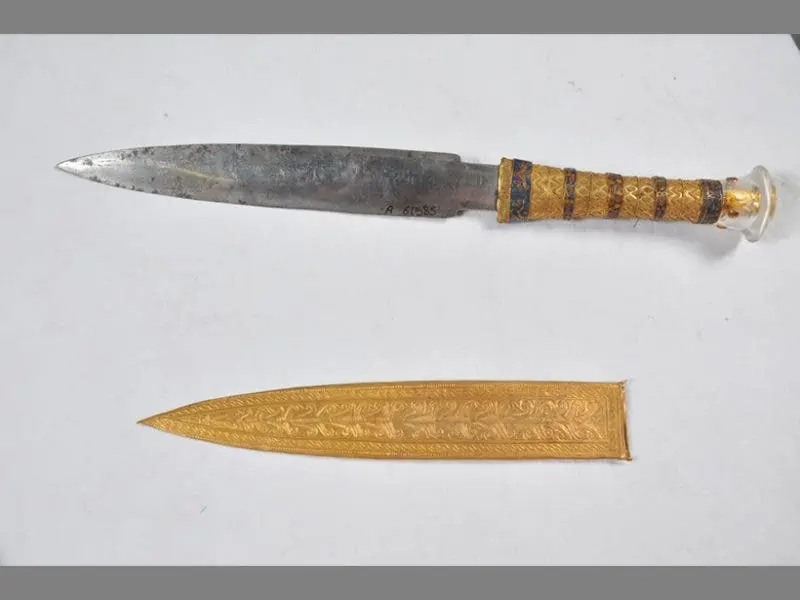
An arrowhead, found in a Bronze Age dwelling in Mörigen, Switzerland, is no ordinary artifact. Recent analysis has revealed that this arrowhead, which has been part of the museum’s collection for decades, was intricately carved from a meteorite that crash-landed on Earth 3,500 years ago.
Celestial iron technology
The investigation, spearheaded by Beda Hofmann, the head and curator of mineralogy and meteorites at the Natural History Museum of Bern, Switzerland, employed various cutting-edge methods to ascertain the arrowhead’s origins and composition.
Despite its unassuming exterior, with a surface seemingly coated in rust, the arrowhead proved to be literally out of this world. X-ray tomography and gamma spectrometry revealed the presence of unusual aluminum-26 isotopes, not commonly found on Earth, along with traces of iron and nickel alloy consistent with meteoric composition. Furthermore, the analysis unveiled telltale grind marks from the shaping process, as well as remnants of tar used to affix the point to the arrow’s shaft.
Initially, the researchers speculated that the arrowhead was sourced from a local meteorite site called Twannberg, which dates back 170,000 years. Twannberg, a remarkable amalgam of three fragments, stands as Switzerland’s largest identified meteorite. However, this connection was later debunked through meticulous analysis of nickel and germanium concentrations. Hofmann and his team accessed geological data that pointed them instead toward the Kaalijarv meteorite site in Estonia, over 1,400 miles away from where the artifact was originally unearthed.
The material from which the arrowhead was forged had likely been traded over long distances—a practice well-documented during the Bronze Age. Perhaps unsurprisingly, meteoric arrowheads remain exceedingly rare; only 55 similar objects have been found across 22 sites in Eurasia and Africa.
“I was hoping to discover in our collection artifacts made from the iron of a meteorite that crashed near to us thousands of years ago. What I did not expect was to find a meteoric arrow from thousands of kilometers away,” said Hofmann.
However, objects made from meteorites were quite common during that era. Over the years, archaeologists have uncovered ceremonial blades, figurines, and jewelry crafted from iron fragments that originated as meteorites plummeting to Earth. Some of these iron artifacts predate the Iron Age by a staggering 2,000 years.
Perhaps the most spectacular is King Tutankhamun’s dagger forged from a meteorite that fell onto Earth’s surface more than 3,300 years ago.

During the Bronze Age, craftsmen had yet to master the skills and develop the metallurgical technology required to work with iron ore’s high melting point (over 1,500° C or 2,700 ° F). Iron ore is also incredibly challenging to extract. Meanwhile, meteorites offered a very rare and valuable pre-formed metal that required less complex metallurgical knowledge to work with compared to extracting and refining metals from ores.
This all changed around 1200 BCE, when people in the Eastern Mediterranean and Near East experimented with iron production techniques. By 800 BCE, iron smelting technology became increasingly refined. Iron’s superior durability, accessibility, and versatility compared to bronze gradually led to its increased use in tools, weaponry, and everyday objects.
The Iron Age ushered in one of the greatest technological revolutions in history. But while iron smelting rendered meteorites practically redundant, these cosmic objects have never ceased to fascinate us.
The findings appeared in the Journal of Archaeological Science.






